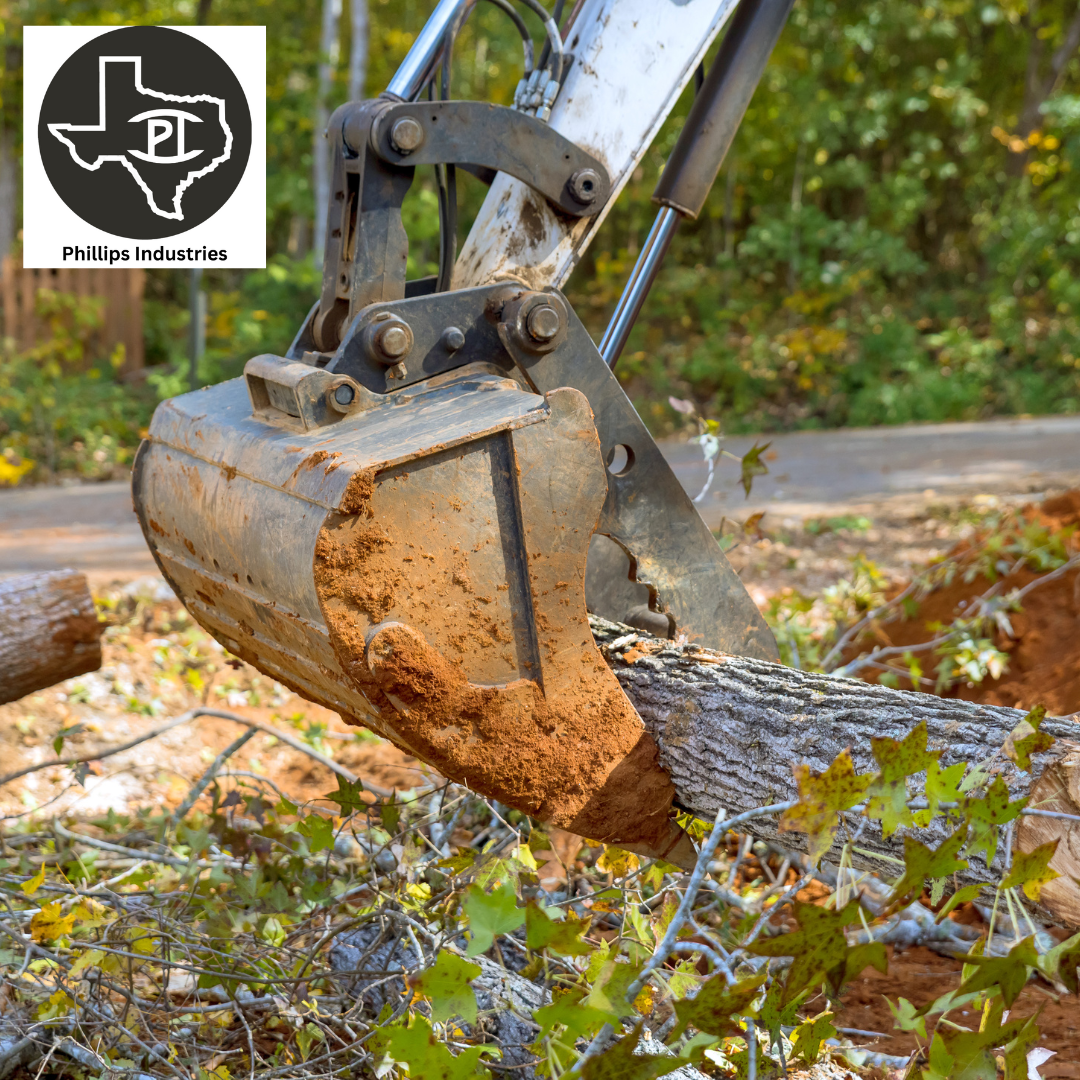Land clearing refers to the process of removing vegetation and other obstacles from a piece of land in order to make it suitable for agriculture, construction, or other purposes. While land clearing is often necessary for human development and economic growth, it can have significant environmental impacts that need to be considered and addressed. This article aims to explore the various environmental impacts of land clearing and highlight the importance of sustainable land management practices and government policies in mitigating these impacts.
Deforestation and its Environmental Impact of Land Clearing
Deforestation is a specific form of land clearing that involves the permanent removal of forests or woodlands. It is primarily driven by agricultural expansion, logging, and urbanization. The effects of deforestation on the environment are far-reaching. Firstly, forests play a crucial role in absorbing carbon dioxide from the atmosphere, acting as a natural carbon sink. When forests are cleared, this carbon is released back into the atmosphere, contributing to greenhouse gas emissions and climate change.
Deforestation also leads to habitat loss for countless species of plants and animals, resulting in a loss of biodiversity. Forests are home to more than half of the world’s terrestrial species, and their destruction can have devastating consequences for ecosystems. Additionally, deforestation can disrupt local water cycles, leading to reduced rainfall and increased soil erosion.
Soil Erosion and Land Degradation due to Clearing
Soil erosion refers to the process by which soil is moved from one location to another by wind or water. Land degradation, on the other hand, refers to the deterioration of land quality due to various factors, including soil erosion. Both soil erosion and land degradation are direct consequences of land clearing activities.
When vegetation is removed from an area, there is no longer any root system to hold the soil in place. This makes it susceptible to erosion by wind and water. Soil erosion can lead to the loss of fertile topsoil, which is essential for agriculture. It can also result in sedimentation in rivers and lakes, leading to water pollution and reduced water quality.
Loss of Biodiversity and Habitat Destruction
| Country | Percentage of threatened species | Percentage of forest loss | Number of endangered species |
|---|---|---|---|
| United States | 31% | 10% | 1,290 |
| Brazil | 38% | 24% | 1,173 |
| Indonesia | 37% | 10% | 771 |
| Australia | 30% | 17% | 511 |
| China | 19% | 9% | 449 |
Biodiversity refers to the variety of life on Earth, including plants, animals, and microorganisms. Habitat destruction, which is often a result of land clearing, is one of the leading causes of biodiversity loss. When forests are cleared or wetlands are drained, the unique habitats that support a wide range of species are destroyed.
The loss of biodiversity has significant ecological consequences. It disrupts the delicate balance of ecosystems and can lead to the extinction of species. This loss of biodiversity not only affects the natural world but also has implications for human well-being. Many medicines and other valuable resources are derived from plants and animals found in these habitats.
Greenhouse Gas Emissions and Climate Change
Greenhouse gas emissions refer to the release of gases into the atmosphere that trap heat and contribute to global warming. Land clearing activities, particularly deforestation, are major contributors to greenhouse gas emissions. When forests are cleared, the carbon stored in trees is released into the atmosphere as carbon dioxide.
The increased concentration of greenhouse gases in the atmosphere leads to climate change, which has wide-ranging impacts on the environment. Rising temperatures can disrupt ecosystems, alter weather patterns, and cause more frequent and severe natural disasters such as hurricanes and droughts. Climate change also poses risks to human health, agriculture, and economies.
Water Pollution and Contamination from Land Clearing

Texas Land clearing activities can result in water pollution and contamination through various mechanisms. When vegetation is removed from an area, there is less vegetation to absorb rainfall and filter out pollutants. This can lead to increased runoff of sediment, nutrients, pesticides, and other pollutants into nearby water bodies.
Water pollution can have detrimental effects on aquatic ecosystems and the organisms that rely on them. It can lead to the loss of biodiversity, the destruction of habitats, and the contamination of drinking water sources. Additionally, polluted water can have negative impacts on human health, causing diseases and other health problems.
Impacts on Indigenous Communities and Traditional Land Use
Indigenous communities often have deep connections to the land and rely on it for their cultural, spiritual, and economic well-being. Land clearing activities can have significant impacts on these communities and their traditional land use practices. When forests are cleared or ecosystems are disrupted, it can disrupt the livelihoods and cultural practices of indigenous peoples.
Furthermore, land clearing activities often occur without the free, prior, and informed consent of indigenous communities, leading to conflicts and human rights violations. It is essential to recognize and respect the rights and knowledge of indigenous peoples when making decisions about land use and development.
Economic and Social Implications of Land Clearing
Land clearing can have significant economic and social implications. In the short term, it may lead to increased agricultural production or provide land for infrastructure development, creating jobs and economic growth. However, in the long term, the environmental impacts of land clearing can outweigh these benefits.
For example, soil erosion and land degradation can reduce agricultural productivity and lead to food insecurity. Loss of biodiversity can disrupt ecosystems that provide valuable ecosystem services such as pollination and water purification. Water pollution can harm fisheries and other industries that rely on clean water sources.
Sustainable Land Management Practices to Minimize Environmental Impact
Sustainable land management practices are essential for minimizing the environmental impact of land clearing. These practices aim to balance human needs with the preservation of ecosystems and natural resources. Examples of sustainable land management practices include reforestation, agroforestry, conservation agriculture, and responsible logging.
Reforestation involves planting trees in areas that have been cleared or degraded. This helps restore ecosystems, sequester carbon dioxide from the atmosphere, and provide habitat for wildlife. Agroforestry combines agriculture and forestry practices, allowing for the cultivation of crops alongside the planting of trees. Conservation agriculture focuses on minimizing soil disturbance and using cover crops to protect the soil from erosion. Responsible logging involves implementing sustainable logging practices that minimize the impact on forests and biodiversity.
Role of Government and Policy in Mitigating Land Clearing Impact
Government and policy play a crucial role in mitigating the environmental impact of land clearing. Governments can enact laws and regulations that promote sustainable land management practices, protect forests and other natural resources, and ensure the rights of indigenous communities are respected.
For example, governments can establish protected areas, national parks, and other conservation areas to preserve biodiversity and ecosystems. They can also implement land-use planning processes that consider environmental impacts and prioritize sustainable development. Additionally, governments can provide incentives and support for sustainable land management practices through financial assistance, technical expertise, and capacity building.
Land clearing has significant environmental impacts that need to be addressed to ensure a sustainable future. Deforestation leads to the loss of carbon sinks, biodiversity, and habitats. Soil erosion and land degradation result in reduced agricultural productivity and water pollution. Indigenous communities and their traditional land use practices are negatively affected. Greenhouse gas emissions contribute to climate change, while water pollution harms aquatic ecosystems and human health. However, through sustainable land management practices and government policies, we can minimize these impacts and create a more sustainable future for all.
Page Design by: Website Creators Near Me






